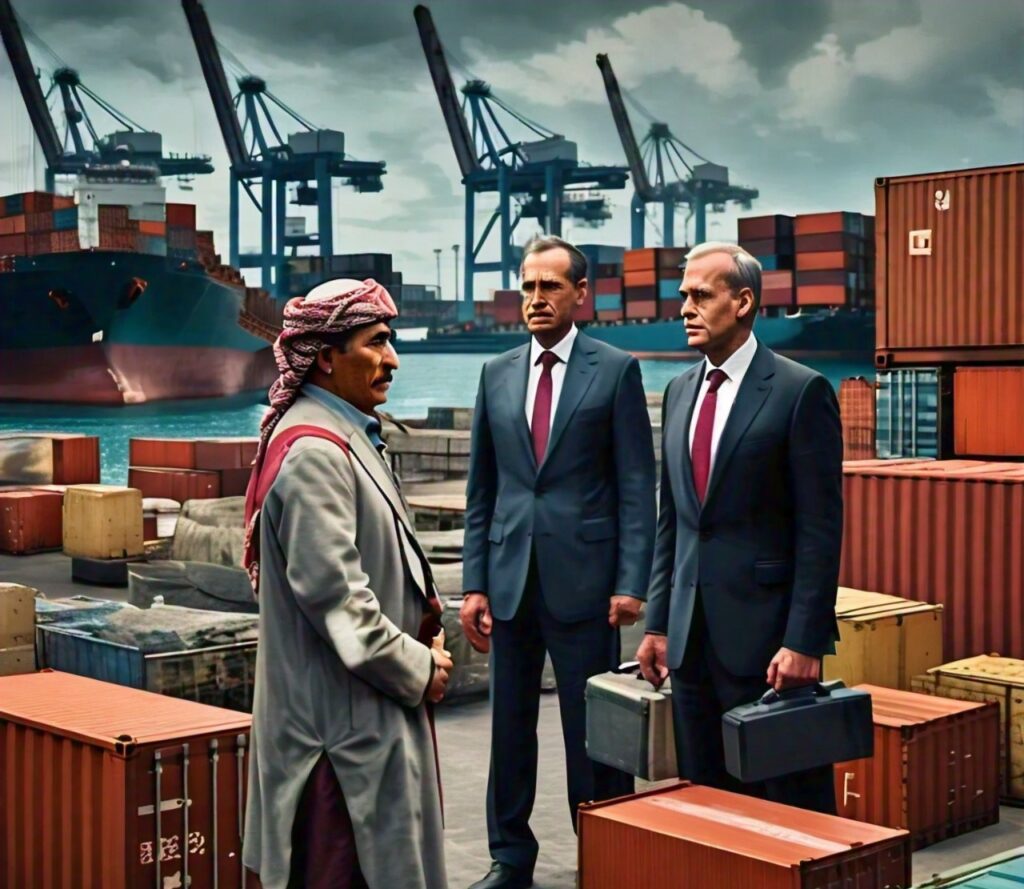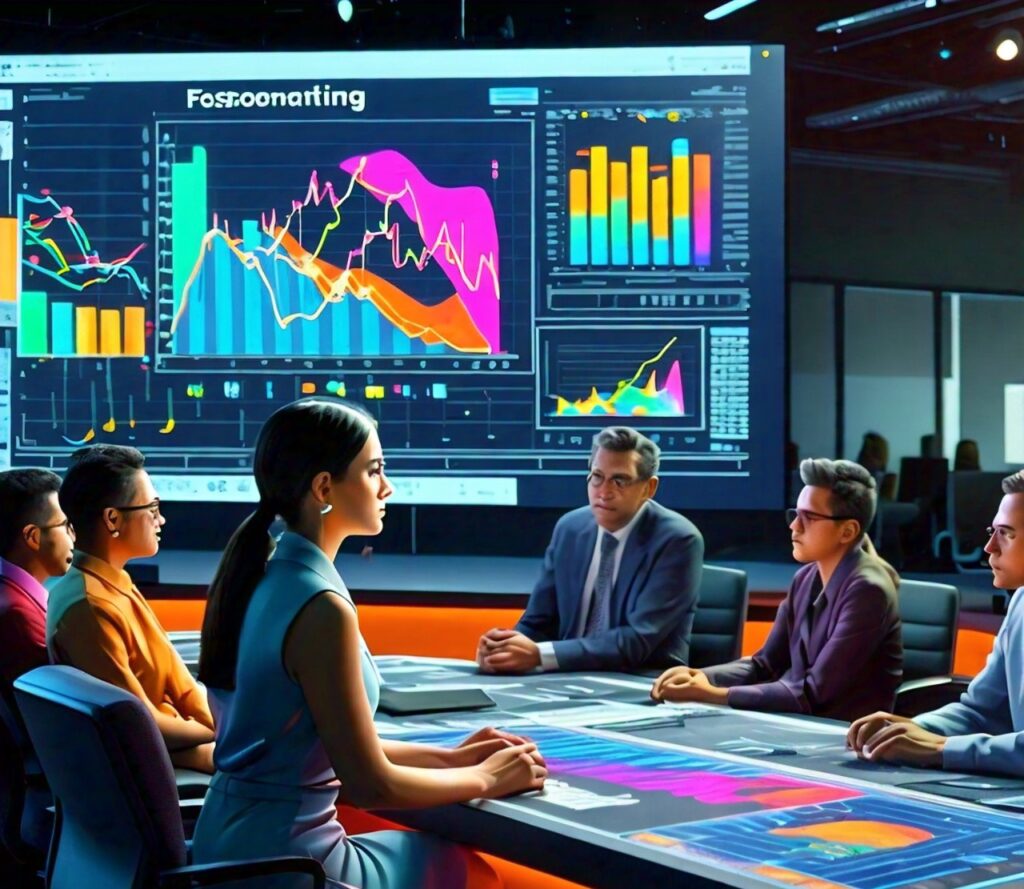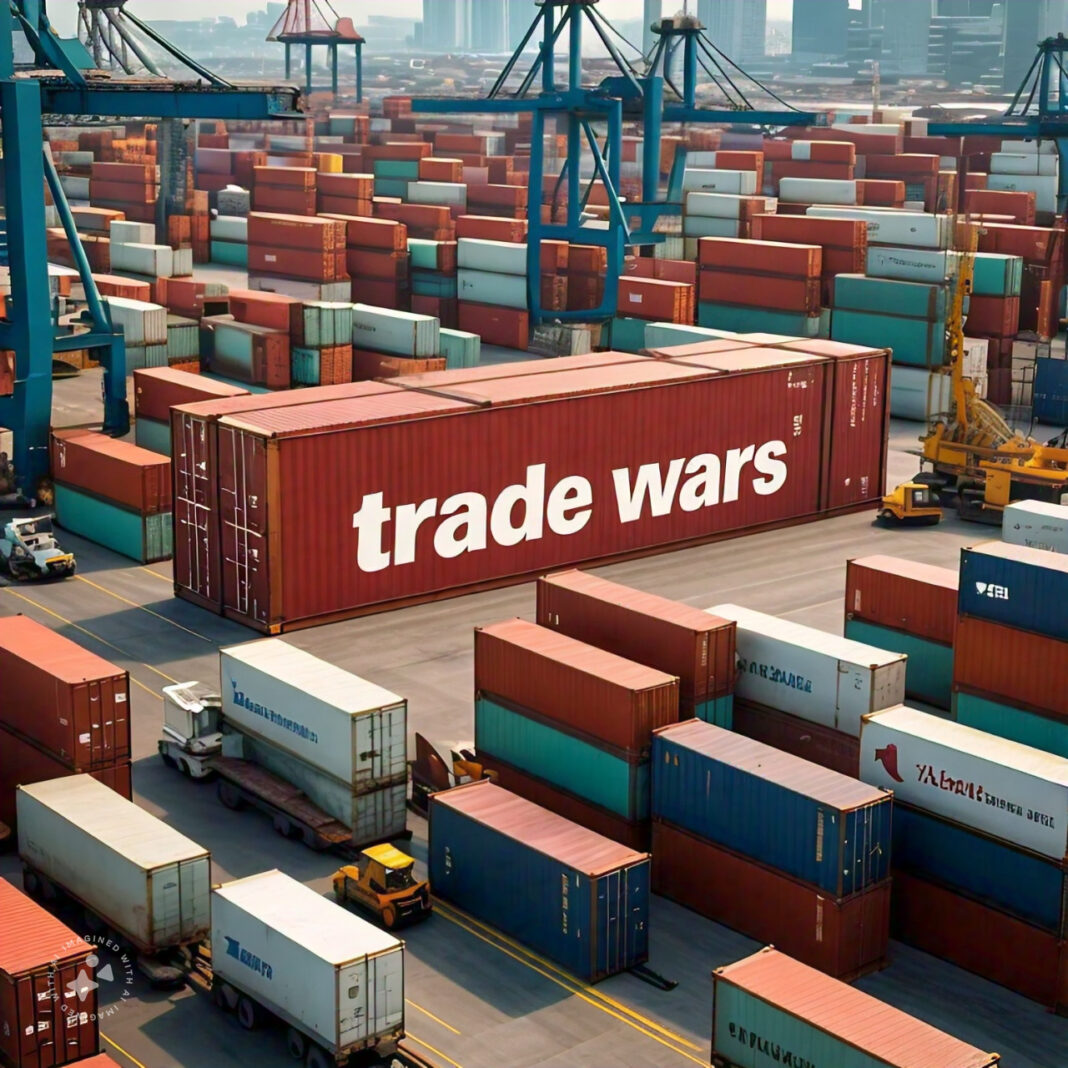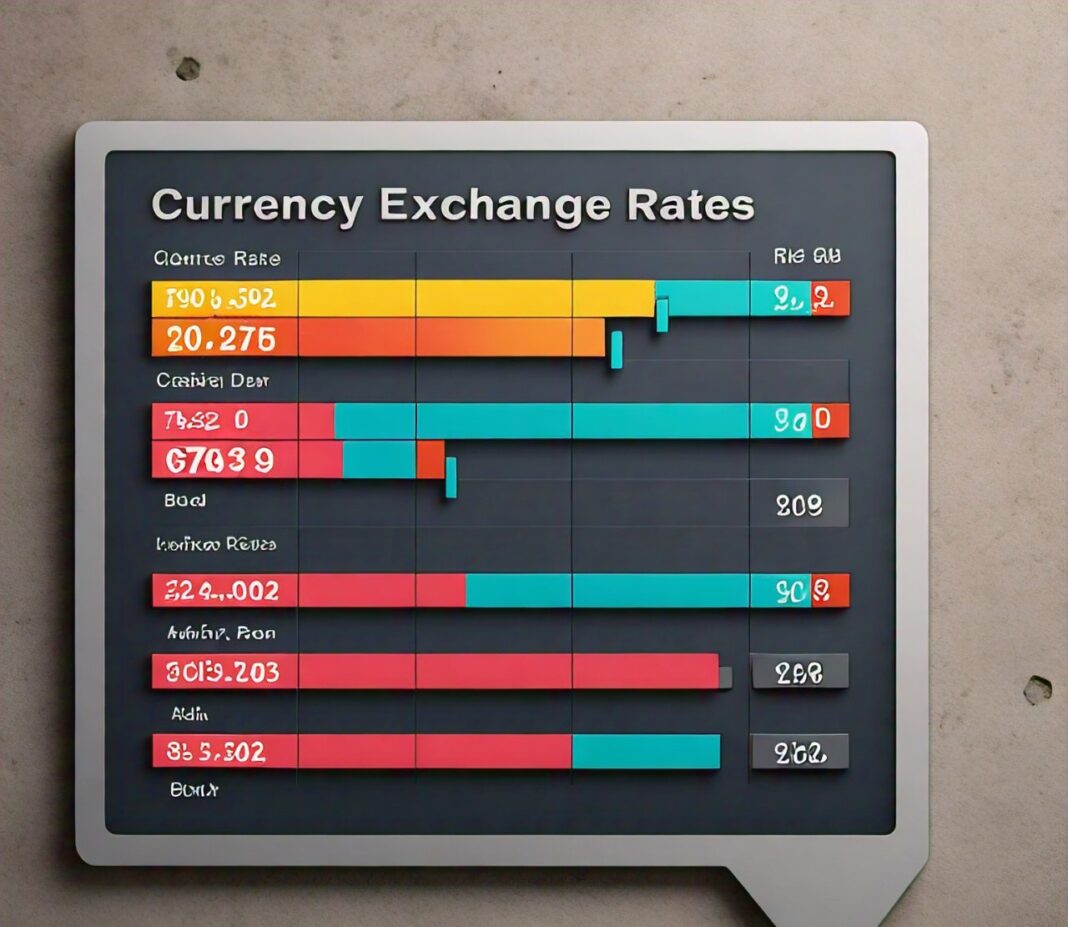Trade wars, characterized by escalating tariffs, trade barriers, and other restrictive measures between countries, have become a prominent feature of the global economic landscape in recent years. These conflicts typically arise from disputes over trade imbalances, intellectual property rights, or geopolitical tensions. A notable example is the ongoing trade war between the United States and China, which has seen significant tariffs imposed on a range of goods and has affected global supply chains.
The significance of trade wars extends beyond immediate trade disruptions; they can alter global economic dynamics, influencing everything from inflation rates to international investment flows. As nations engage in these conflicts, the reverberations are felt across industries, altering business strategies and economic forecasts.
Importance of Economic Forecasting
Economic forecasting serves as a crucial tool for understanding and anticipating the effects of trade wars on future economic conditions. Accurate forecasts enable policymakers, businesses, and analysts to make informed decisions in the face of uncertainty. For economists and analysts, developing robust forecasts involves analyzing a complex interplay of trade policies, market reactions, and global economic indicators.
The purpose of this article is to delve into the methodologies and techniques used for economic forecasting amidst trade wars. We will explore various frameworks and tools that can help predict the economic impacts of trade tensions, providing insights into how these conflicts might shape future economic conditions.
Understanding the Mechanisms of Trade Wars
Key Drivers of Trade Wars
Trade wars are driven by a variety of factors, each influencing the dynamics of international trade in distinct ways. Understanding these drivers is crucial for developing accurate economic forecasts.
- Tariffs and Trade Barriers:
- Tariffs: These are taxes imposed on imported goods, making them more expensive compared to domestic products. High tariffs can reduce the volume of imports and disrupt global supply chains. For example, during the U.S.-China trade war, tariffs were levied on hundreds of billions of dollars’ worth of goods, affecting both economies significantly.
- Trade Barriers: These include quotas (limits on the quantity of goods imported), subsidies (financial support to domestic industries), and other regulatory measures that restrict trade. Such barriers can protect local industries but may also lead to retaliation and escalating trade conflicts.
- Quotas and Subsidies:
- Quotas: Limits set on the amount of goods that can be imported from a particular country. Quotas can create shortages and drive up prices for consumers.
- Subsidies: Financial assistance provided by governments to domestic businesses to make their products cheaper compared to foreign goods. While subsidies can help local industries compete, they can also provoke disputes if trading partners view them as unfair.
- Non-Tariff Barriers:
- Regulations and Standards: These include health and safety standards, environmental regulations, and other rules that can affect the ability of foreign companies to sell their products. Non-tariff barriers can be used strategically to limit imports without imposing direct tariffs.
- Administrative Procedures: Lengthy customs procedures, excessive documentation requirements, and bureaucratic hurdles can act as barriers to trade.
Also Read: Trade Wars: The Future and What Lies Ahead

Immediate Economic Effects of Trade Wars
The immediate effects of trade wars can be significant and widespread, impacting various aspects of the economy:
- Impact on Trade Volumes:
- Reduced Trade Flows: Increased tariffs and trade barriers can lead to a decline in the volume of international trade. Companies may face higher costs for importing raw materials and exporting finished goods, which can lead to reduced global trade volumes.
- Price Changes and Inflation:
- Increased Costs: Higher tariffs on imported goods often lead to increased costs for consumers and businesses. This can result in higher prices for a wide range of products, contributing to inflation.
- Supply Chain Disruptions: Trade wars can disrupt established supply chains, leading to shortages of critical components and increased production costs.
- Supply Chain Disruptions:
- Operational Challenges: Companies may need to find alternative suppliers or adjust their production processes in response to trade barriers. This can lead to inefficiencies and increased costs.
- Global Trade Realignments: Long-term disruptions can result in shifts in global trade patterns as businesses seek new markets and suppliers.
Frameworks for Economic Forecasting
Econometric Models
Econometric models are essential tools for forecasting the economic impacts of trade wars. They help quantify relationships between economic variables and predict future outcomes based on historical data.
- Overview of Common Models:
- ARIMA (AutoRegressive Integrated Moving Average): This model is used for time series forecasting, focusing on capturing trends and seasonal patterns in economic data. It is useful for predicting short-term impacts based on past trends.
- VAR (Vector Autoregression): VAR models analyze the interrelationships between multiple economic variables, such as trade volumes, GDP, and inflation. They can help understand how shocks in one variable (e.g., increased tariffs) affect others.
- DSGE (Dynamic Stochastic General Equilibrium): DSGE models incorporate microeconomic foundations and stochastic elements to simulate how economies respond to various shocks, including trade policy changes. They are valuable for long-term forecasting and policy analysis.
- Application to Trade War Scenarios:
- Econometric models can simulate the effects of different trade policies and tariffs, helping predict their impact on economic indicators like GDP growth and inflation. For instance, a VAR model might be used to assess how a trade war between major economies could affect global trade and domestic economic conditions.
Scenario Analysis
Scenario analysis involves developing and analyzing different potential outcomes based on varying assumptions about trade tensions and policies. It provides a structured approach to exploring uncertainties and their implications for the economy.
- Developing and Analyzing Scenarios:
- Baseline Scenario: Represents the expected outcome under current conditions without any additional trade conflicts. This serves as a reference point for comparing the impacts of trade wars.
- Optimistic Scenario: Assumes that trade tensions are resolved quickly or that policies have a smaller impact than anticipated. This scenario might show minimal disruption to economic growth and trade.
- Pessimistic Scenario: Envisions a prolonged trade conflict with significant tariffs and barriers, leading to substantial economic disruptions. This scenario helps assess the potential worst-case impacts on economic indicators and global trade.
- Incorporating Uncertainty and Risk Factors:
- Sensitivity Analysis: Examines how changes in key variables (e.g., tariff rates, trade volumes) affect economic outcomes. This helps identify which factors have the greatest influence on forecasts.
- Risk Management: Considers potential risks and uncertainties, such as geopolitical developments or unexpected policy changes. Effective risk management involves preparing for a range of possible outcomes and developing contingency plans.
Input-Output Analysis
Input-output analysis is a technique used to understand the economic interdependencies between different sectors and how changes in one sector affect others. It is particularly useful for assessing the broader impacts of trade wars on various industries.
- Understanding Sectoral Impacts and Interdependencies:
- Sectoral Analysis: Input-output tables show how output from one industry is used as input in another. Analyzing these tables helps determine how disruptions in trade (e.g., reduced exports or imports) affect different sectors.
- Ripple Effects: Trade wars can create ripple effects throughout the economy, as disruptions in one sector (e.g., manufacturing) can lead to reduced activity in related sectors (e.g., transportation, retail).
- Application in Forecasting:
- Economic Impact Assessment: By analyzing input-output relationships, economists can estimate the direct and indirect impacts of trade policies on various sectors and regions. This helps in forecasting how trade wars might affect overall economic activity and employment.
Forecasting Techniques and Tools
Historical Data Analysis
Historical data analysis involves examining past trade conflicts and their economic impacts to inform current forecasts. By understanding how previous trade wars have affected economies, analysts can develop insights into potential future outcomes.
- Using Past Trade Conflicts:
- Case Studies: Historical examples, such as the Smoot-Hawley Tariff Act of 1930 or the US-Japan trade disputes of the 1980s, provide valuable lessons on the economic impacts of trade barriers. Analyzing these case studies helps identify patterns and potential outcomes of current trade wars.
- Economic Indicators: Reviewing historical changes in GDP, inflation, and trade volumes during past trade conflicts can offer benchmarks for predicting the effects of similar situations.
- Drawing Lessons and Identifying Patterns:
- Economic Trends: Past data helps recognize trends such as the lag effect of tariffs on inflation or the impact on global supply chains. Identifying these patterns can enhance the accuracy of forecasts.
- Policy Responses: Understanding how different policy responses have mitigated or exacerbated trade war impacts helps in evaluating current policy measures.
Also Read: How Trade Sanctions Are Affecting Global Markets

Real-Time Data and Indicators
Real-time data and economic indicators are crucial for short-term forecasting, allowing analysts to monitor ongoing trade tensions and their immediate effects.
- Key Economic Indicators:
- Trade Balances: Monitoring changes in trade balances can reveal shifts in export and import volumes due to trade policies.
- Business Sentiment: Surveys and indices measuring business confidence can provide insights into how trade tensions are affecting economic expectations and investment decisions.
- Inflation Rates: Tracking changes in inflation rates helps assess the impact of tariffs and trade barriers on consumer prices and purchasing power.
- Using Real-Time Data for Short-Term Predictions:
- Adjusting Forecasts: Real-time data allows for adjustments in forecasts based on the latest developments in trade policies and market reactions.
- Timely Analysis: Immediate access to data helps in producing timely analyses and forecasts that reflect current economic conditions and policy changes.
Predictive Analytics and AI
Predictive analytics and artificial intelligence (AI) are increasingly being used to enhance forecasting accuracy by analyzing large datasets and identifying patterns that might not be apparent through traditional methods.
- Role of Machine Learning and AI:
- Pattern Recognition: AI algorithms can analyze vast amounts of data to identify complex patterns and correlations related to trade wars and economic impacts.
- Model Enhancement: Machine learning models can improve traditional econometric forecasts by incorporating more variables and refining predictions based on new data.
- Examples of Predictive Models and Their Effectiveness:
- Forecasting Models: Examples include neural networks that predict economic outcomes based on historical trade data and real-time inputs. These models can provide more nuanced forecasts and help in understanding the potential range of economic impacts.
- Effectiveness: While AI and machine learning can enhance forecasting capabilities, they are not without limitations. The effectiveness of these models depends on the quality of data and the algorithms used. Continuous validation and updates are necessary to maintain accuracy.
Further Read: Why Emerging Markets Are the Next Frontier in International Trade

Policy Responses to Mitigate Negative Impacts
Trade wars can have substantial economic consequences, and effective policy responses are crucial for mitigating their negative impacts. Policymakers can adopt various strategies to address the challenges posed by trade conflicts.
- Suggested Policies to Address Trade War Effects:
- Trade Adjustment Assistance: Providing support to industries and workers adversely affected by trade wars can help cushion the economic blow. This may include financial assistance, retraining programs, and job placement services.
- Diversification Incentives: Encouraging businesses to diversify their markets and supply chains can reduce their reliance on any single country or region. Policies that support investment in new markets or technologies can foster greater resilience.
- Strategic Trade Agreements: Pursuing new trade agreements or strengthening existing ones can help offset the negative effects of trade barriers. Agreements that lower tariffs and expand market access can provide economic relief.
- Case Studies of Effective Policy Measures:
- The U.S. Trade Adjustment Assistance Program: This program provides financial and technical assistance to workers and businesses affected by trade policy changes. Evaluations of its effectiveness highlight its role in supporting economic adjustment.
- Germany’s Export Credit Guarantees: Germany’s government offers export credit guarantees to support businesses facing risks from international trade disputes. This policy has been effective in maintaining export stability.
Strategic Planning for Businesses
Businesses must adapt to the challenges posed by trade wars through strategic planning and risk management. Developing a proactive approach can help mitigate the impacts of trade tensions.
- Recommendations for Businesses to Adapt to Trade Tensions:
- Supply Chain Management: Companies should assess and diversify their supply chains to reduce vulnerability to trade disruptions. This may involve sourcing from multiple suppliers or relocating production facilities.
- Cost Management: Businesses can manage increased costs by optimizing operations, renegotiating contracts, and exploring cost-saving measures. Effective cost management can help absorb some of the financial impacts of trade barriers.
- Market Diversification: Expanding into new markets can reduce dependence on regions affected by trade conflicts. Businesses should explore opportunities in emerging markets and adjust their marketing strategies accordingly.
- Risk Management Strategies and Contingency Planning:
- Scenario Planning: Developing and testing different scenarios based on potential trade outcomes can help businesses prepare for various possibilities. Scenario planning involves identifying key risks and developing response strategies.
- Contingency Plans: Businesses should create contingency plans for managing disruptions in supply chains, fluctuations in costs, and changes in market conditions. These plans should include measures for quickly adapting to new trade policies or economic conditions.
Also Read: The Impact of Trade Deficits on National Economies
Conclusion
Economic forecasting amidst trade wars involves a complex analysis of various factors, from immediate impacts to long-term projections. Key findings include:
- Immediate Economic Effects: Trade wars can lead to short-term disruptions such as reduced GDP growth, increased inflation, and sector-specific challenges. Industries reliant on international trade are particularly vulnerable.
- Medium-Term and Long-Term Projections: Over the medium and long term, trade wars can cause structural changes in the economy, including shifts in global trade patterns and economic diversification efforts. Businesses and countries may realign their strategies to mitigate the impacts of prolonged trade conflicts.
- Forecasting Techniques: Utilizing econometric models, scenario analysis, real-time data, and AI can enhance the accuracy of forecasts. These tools help predict economic outcomes and assess the potential effects of trade policies.
Economic forecasting in the context of trade wars is crucial for policymakers, businesses, and analysts seeking to navigate the uncertainties of global trade conflicts. By employing robust forecasting methods and considering both immediate and long-term impacts, stakeholders can better prepare for and respond to the challenges posed by trade wars. Accurate predictions and strategic planning are essential for minimizing economic disruptions and capitalizing on emerging opportunities in an evolving global landscape.






